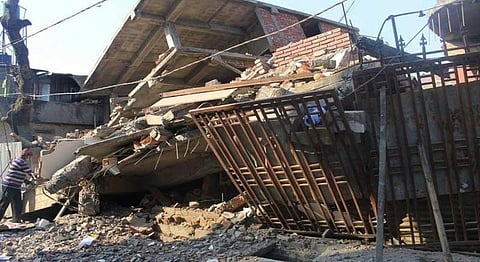Warning Issued For 8.0 Magnitude Earthquake To Hit India In A Year
As rescue operations and relief work continues in Manipur, which was hit by a massive 6.7 magnitude earthquake earlier this week, more bad news comes in as disaster management experts of the Union Home Ministry issued warnings of an even bigger quake that is yet to come within a year. Predicted to hit a whopping 8.2 on the Richter scale, the earthquake will be disastrous for the seismically volatile and still-recovering Himalayan region that has suffered 18 earthquakes in the past 100 years, all over magnitudes of 7.0.
The most recent earthquakes—Manipur 6.7 (January 2016), Nepal 7.3 ( May 2015), and Sikkim (September 2011)—are said to have ruptured tectonic plates that had already developed cracks due to previous earthquakes, such as the one in Shillong in 1897, and the Assam-Arunachal-Tibet earthquake of 1950 that even caused the Brahmaputra river to alter its course.
The collision of the Indian and Eurasian tectonic plates in the north and the tectonic movement alongside the Indo-Myanmar border is allegedly to blame for the seismic activity. India is divided into four seismic zones, explains Times of India, and the most active of them, Zone V, includes the whole of the northeast, as well as parts of north Bihar, Uttarakhand, Himachal Pradesh, Jammu and Kashmir, and Gujarat.

After assessing the aftermath of the Nepal earthquake, the Ministry of Home Affair's (MHA) National Institute of Disaster Management (NIDM) warned of an increasing threat around the "ring of fire garlanding the entire north India especially the mountains," quotes Times of India, which was also brought up in the National Crisis Management Committee meetings with representatives of the various hill states following the Manipur quake.
Alarmingly, not all Indian scientists seem convinced of the prediction. But Roger Bilham, the seismologist at the University of Colorado, along with other international experts, is of the opinion that "the current conditions might trigger at least four earthquakes greater than 8.0 in magnitude. And if they delay, the strain accumulated during the centuries will provoke more catastrophic mega earthquakes."
With a history of catastrophic earthquakes and a predicted future of more to come, the question arises as to how prepared we really are for such a disaster. Infrastructure and regulatory mechanisms in cities that hold prominent positions in the major disaster areas are weak, according to the Ministry of Home Affair's own assessment. There's no doubt that if an earthquake strikes any area with a high population, there will be a huge numbers of casualties and massive property damage.
And though the United Nations Office for Disaster Risk Reduction (UNISDR) has emphasised India's need for compliance with building codes and the necessity for an enhanced preparedness for effective response to earthquakes, the scale of our disaster management and preparedness will only be evident in the time to come. Let's hope that the government takes these warnings seriously and stays prepared for whatever might happen.
Words: Sara Hussain


